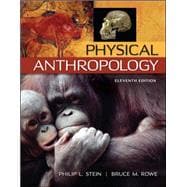
Note: Supplemental materials are not guaranteed with Rental or Used book purchases.
Purchase Benefits
What is included with this book?
Studies of Physical Anthropology 2
Physical Anthropology in the World ofAnthropology 2
Conclusion 3
Hypotheses and Testing Hypotheses 4
Science and Religion 5
Questioning the Old Ideas 7
Early Evolutionary Ideas 8
What Is the Age of the Earth? 10
Humans before Adam and Eve? 11
Darwin’s Voyage of Discovery 12
Darwinian Natural Selection 13
Evolution and Anti-Evolution Movements 15
Evolutionary Theory after Darwin: The Grand Synthesis 19
Problems in the Study of Heredity 24
The Work of Gregor Mendel 24
A Model of Genetic Events 26
What Is a Trait? 27
Mendelian Inheritance in Humans 28
The Chromosomes 31
Cell Division 32
Reexamining Mendelian Genetics 35
Molecules of Life 39
The Nucleic Acids 40
Protein Synthesis 44
Blood-Type Systems 49
Human Inherited Abnormalities 51
Other Patterns of Inheritance 53
Chromosomal Abnormalities 55
Genetics and Medicine 58
The Control of Human Biological Evolution 60
What Is a Gene? 63
The Human Genome 64
Populations 70
Genetic Equilibrium 71
Using the Genetic-Equilibrium Model 73
Mutations 75
Genetic Drift, Population Bottlenecking, and the Founder Principle 77
Gene Flow 80
Nonrandom Mating 81
Differential Fertility 82
Environment, Habitat, and Niche 88
The Mechanisms of Natural Selection 88
Types of Natural Selection 90
Natural Selection in Humans 91
Natural Selection and Sickle-Cell Anemia 93
Sexual Selection 96
Kin Selection 98
The Evolution of Subspecies 100
The Evolution of Species 101
Specialized and Generalized Species 103
Rates of Speciation 104
Some Basic Concepts in Evolutionary Theory 106
Linnaeus’s Classification 113
The Taxonomic Hierarchy 114
The Basis of Modern Taxonomy 115
Determining Evolutionary Relationships 116
Cladistics 119
The Animal Kingdom 122
The Phylum Chordata 122
The Vertebrates 122
The Mammals 124
The Evolution of the Primates 133
Characteristics of the Primates 134
The Senses 134
The Growth and Development of Primates 136
The Lemuriformes 139
The Tarsiiformes 143
The New World Monkeys 144
The Old World Monkeys 145
The Apes 147
The Gibbons 148
The Orangutan 150
The African Great Apes 151
Humans 155
Locomotor Patterns among the Primates 160
Comparative Anatomy of Primate Locomotion 162
The Hominoid Skeleton 163
Adaptations for Erect Bipedalism 165
Comparative Anatomy of the Hand 167
Positioning of the Skull on the Spine 170
The Sense Organs 170
The Evolution of the Brain 172
Primate Dentition 174
The Jaw 179
Comparative Cytogenetics 182
Comparative Studies of Proteins 184
Comparative Genomics 186
Kinds of Primate Social Organization 191
Methods in the Study of Primate Behavior 194
Social Behavior of the Gibbon 196
Social Behavior of the Gelada 198
Social Behavior of the Savanna Baboon 200
Social Behavior of the Chimpanzee 206
The Structure of the Human Band 215
Age and Diet 217
Culture 220
Protoculture among Nonhuman
Primates 221
Human Universals 222
Communication 224
Language 225
Intelligence in Nonhuman Primates 228